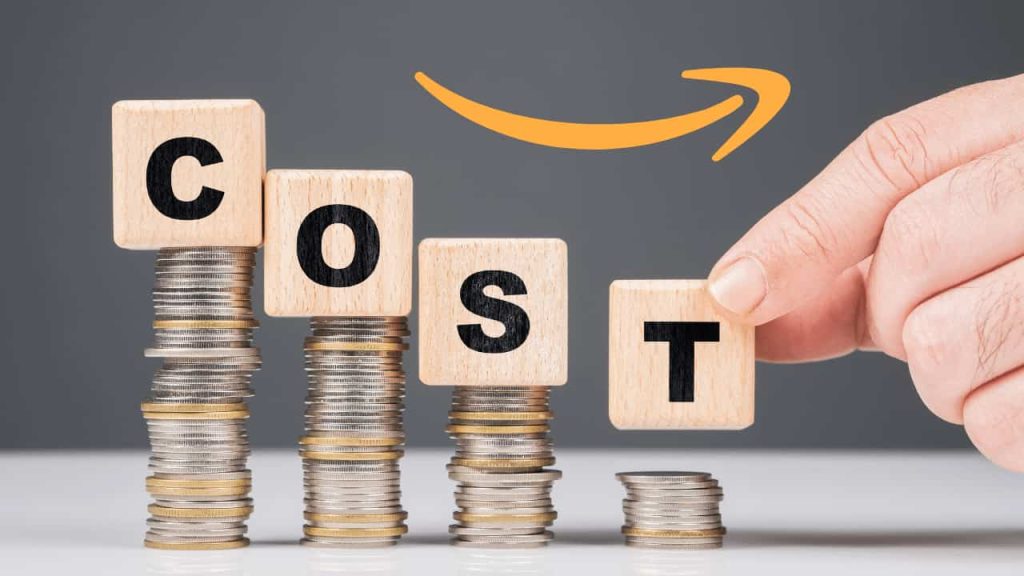Considering venturing into Amazon sales? You might be familiar with Fulfillment by Amazon (FBA), a service where Amazon oversees your product’s storage, shipping, and customer support. However, the question arises: Is Amazon FBA beneficial for your venture, and is it still worth it in 2024?
This decision hinges on several factors, such as your business objectives, financial capacity, and proficiency in navigating the Amazon marketplace. FBA offers significant advantages to certain sellers, but it’s not universally the optimal choice. This discussion aims to dissect the advantages and drawbacks of Amazon FBA, providing essential insights to determine if it aligns with your business strategy.
For those new to Amazon selling, understanding FBA’s mechanics is crucial. By opting for FBA, you entrust your inventory to Amazon’s fulfillment centers, awaiting order placement. Upon sale, Amazon manages the logistics and customer interactions, allowing you to dedicate attention elsewhere in your business. But does the convenience of Amazon’s fulfillment service justify the expense? We’ll delve deeper to uncover the answer.
Understanding Amazon FBA
Thinking about selling on Amazon? Then you’ve probably stumbled upon “Fulfillment by Amazon,” or FBA for short. It’s a handy service provided by Amazon where they take care of the heavy lifting for sellers. Basically, you send your products to Amazon’s fulfillment centers, and they handle the rest – picking, packing, and shipping your products whenever a customer makes an order. In this section, let’s dive into what FBA really means and how it operates, making your Amazon selling journey a bit smoother.
What is Fulfillment by Amazon (FBA)?

FBA is a service offered by Amazon that allows sellers to store their products in Amazon’s fulfillment centers. When a customer places an order, Amazon picks, packs, and ships the product on behalf of the seller. Amazon also handles customer service and returns for FBA orders. In exchange for these services, Amazon charges fees to the seller.
How Amazon FBA Works?
To use FBA, you first need to create an Amazon seller account and sign up for FBA. Once you have signed up, you can send your products to Amazon’s fulfillment centers. Amazon will then store your products and make them available for sale on the Amazon website.
When a customer places an order, Amazon will pick, pack, and ship the product to the customer. Amazon will also handle customer service and returns for FBA orders. As a seller, you can track your inventory and sales through your Amazon seller account.
Using FBA can offer several benefits to sellers, including access to Amazon’s vast customer base, Prime eligibility, and faster shipping times. However, it is important to note that FBA fees can be higher than other fulfillment options, and not all products are eligible for FBA.
The Cost Structure of Amazon FBA

If you are considering using Amazon FBA, it is important to understand the cost structure associated with this service. In this section, we will explain the fees associated with Amazon FBA, how storage fees work, and how to calculate your profit margins.
FBA Fees Explained
When you use Amazon FBA, you will be charged several fees including a fulfillment fee, storage fee, and referral fee. The fulfillment fee is the fee charged by Amazon for picking, packing, and shipping your products to customers. The fee varies depending on the size and weight of your product. You can use the Amazon FBA fee calculator to estimate your fees.
The storage fee is the fee charged by Amazon for storing your products in their warehouse. The fee is charged monthly and is based on the volume of space your products occupy. There are also long-term storage fees for products that have been in Amazon’s warehouse for more than 365 days.
The referral fee is the fee charged by Amazon for each item sold. The fee varies depending on the category of the product. In 2024, for products priced between $15 and $20, the referral fee decreased from 17% to 10%.
Understanding Storage Fees
It is important to manage your inventory to avoid unnecessary storage fees. Amazon charges different rates for standard-size and oversized items, and for products stored during the peak holiday season. You can use Amazon’s Inventory Performance Index (IPI) to track your inventory levels and avoid long-term storage fees.
Calculating Profit Margins

When selling products on Amazon, it is important to calculate your profit margins to ensure that you are making a profit. You can use the following formula to calculate your profit margins:
Profit Margin = (Selling Price – Amazon Fees – Cost of Goods) / Selling Price * 100
Selling price is the price you sell your product for, Amazon fees include the fulfillment fee, storage fee, and referral fee, and cost of goods is the cost of producing or purchasing your product.
In conclusion, Amazon FBA can be a worthwhile investment for your business, but it is important to understand the cost structure associated with this service. By understanding the fees associated with Amazon FBA, how storage fees work, and how to calculate your profit margins, you can make an informed decision about whether Amazon FBA is right for your business.
The Benefits of Amazon FBA
If you are considering selling your products on Amazon, using Amazon FBA can be a game-changer for your business. Here are some of the benefits you can enjoy when you use Amazon FBA:
Leveraging Prime Membership
One of the main benefits of using Amazon FBA is that it allows you to leverage Amazon Prime membership. Amazon Prime is a subscription service that offers free two-day shipping on millions of items, among other benefits. By using Amazon FBA, your products become eligible for Prime delivery, which can help you attract more customers and increase sales.
Enhanced Customer Service

Another advantage of using Amazon FBA is that it provides enhanced customer service. When you use Amazon FBA, Amazon handles all customer inquiries, returns, and refunds on your behalf. This can save you time and effort, and help you build a strong reputation for your brand. Additionally, Amazon has a strict policy of ensuring customer satisfaction, so you can be confident that your customers will receive excellent service.
Streamlined Logistics and Shipping
Using Amazon FBA also means that you can take advantage of Amazon’s streamlined logistics and shipping. Amazon’s vast network of warehouses and distribution centers means that your products can be stored and shipped efficiently, which can help you save money on storage and shipping costs. Additionally, Amazon provides shipping labels and handles all shipping logistics, so you don’t have to worry about the details.
Overall, Amazon FBA offers many benefits for sellers looking to grow their business on Amazon. By leveraging Prime membership, enhancing customer service, and streamlining logistics and shipping, you can focus on growing your business while Amazon takes care of the rest.
Challenges of Using Amazon FBA
Using Amazon FBA can be a great way to sell products online, but it does come with its own set of challenges. In this section, we will discuss some of the most common challenges that sellers face when using Amazon FBA.
Competition on Amazon
One of the biggest challenges of using Amazon FBA is the competition on the platform. With millions of sellers and products available, it can be difficult to stand out from the crowd and attract customers to your products. To overcome this challenge, you need to have a solid marketing strategy in place that will help you differentiate your products from the competition.
Inventory and Storage Issues

Another challenge of using Amazon FBA is managing your inventory and storage. Amazon charges fees for storing your products in their warehouses, and if you don’t manage your inventory properly, you could end up with excess inventory that you can’t sell. To avoid this, you need to have a good inventory management system in place that will help you keep track of your inventory levels and ensure that you always have enough stock to meet customer demand.
Handling Returns and Refunds
Returns and refunds can also be a challenge when using Amazon FBA. Amazon has strict rules and regulations when it comes to returns and refunds, and if you don’t follow these rules, you could end up losing money and damaging your reputation as a seller. To avoid this, you need to have a clear returns policy in place that outlines your rules and procedures for handling returns and refunds.
Overall, while there are certainly challenges to using Amazon FBA, it can still be a very profitable way to sell products online. By understanding these challenges and taking steps to overcome them, you can increase your chances of success and profitability on the platform.
Strategies for Success with Amazon FBA
Thinking about giving Amazon FBA a shot for your business? It’s crucial to have a solid game plan ready to go if you want to hit the ground running. Let’s talk about some essential strategies to remember:
Product Selection and Research
Choosing the right products to sell on Amazon is crucial for profitability and success. Conduct thorough product research to identify profitable products that are in demand and have low competition. Look for products that have a high profit margin and are lightweight and easy to ship. Use tools like Jungle Scout or Helium 10 to help with product research.
Optimizing Product Listings
Optimizing your product listings is essential for increasing visibility and sales on Amazon. Use relevant keywords in your product title, bullet points, and product description to improve search rankings. Include high-quality images and detailed product information to help customers make informed buying decisions. Use A+ content to showcase your brand and differentiate your products from competitors.
Marketing and Promotion
Marketing and promotion are key to driving traffic and sales on Amazon. Use Amazon Advertising to increase product visibility and drive sales. Launch PPC campaigns to target relevant keywords and audiences. Use social media and email marketing to promote your products and drive traffic to your Amazon listings. Build your brand and reputation through exceptional customer service and positive reviews.
By implementing these strategies, you can increase your chances of success with Amazon FBA. Remember to continually analyze and adjust your strategy to stay ahead of the competition and maximize profitability.
Amazon FBA Business Models
If you are considering starting an Amazon FBA business, you have several models to choose from. Each model has its own advantages and disadvantages. In this section, we will discuss three popular models: private label selling, wholesale distribution, and retail arbitrage.
Private Label Selling
Private label selling is the most popular Amazon FBA business model. It involves creating your own brand and selling products under your brand name. With private label selling, you have complete control over the product design, packaging, and marketing. You can also differentiate your products from others in the market, which can help you stand out and attract more customers.
To succeed in private label selling, you need to find a profitable niche, source high-quality products, and create a strong brand. You also need to invest in marketing and advertising to promote your products and build brand awareness.
Wholesale Distribution
Wholesale distribution involves buying products in bulk from manufacturers or distributors and selling them on Amazon. With this model, you don’t have to create your own brand or design your own products. Instead, you can focus on finding profitable products and negotiating with suppliers to get the best prices.
To succeed in wholesale distribution, you need to find reliable suppliers, negotiate good deals, and manage your inventory effectively. You also need to monitor your competition and adjust your prices and marketing strategies accordingly.
Retail Arbitrage
Retail arbitrage involves buying products from retail stores and reselling them on Amazon. With this model, you can find profitable products by scanning store shelves and looking for items that are on clearance or sale. You can then sell these products on Amazon for a higher price and make a profit.
To succeed in retail arbitrage, you need to have a good eye for profitable products, be able to negotiate with store managers, and manage your inventory effectively. You also need to monitor your competition and adjust your prices and marketing strategies accordingly.
In conclusion, each Amazon FBA business model has its own advantages and disadvantages. You need to choose the model that best fits your skills, interests, and resources. Whether you choose private label selling, wholesale distribution, or retail arbitrage, you can build a successful online business with Amazon FBA.
Choosing the Right Selling Plan
When you start selling on Amazon, one of the first decisions you will need to make is choosing the right selling plan. Amazon offers two types of selling plans: Individual and Professional. In this section, we will go over the differences between the two plans, and help you decide which one is right for you.
Individual vs. Professional Plans
The Individual plan is best suited for sellers who plan to sell fewer than 40 items per month. With this plan, you will be charged a fee of $0.99 per item sold, in addition to other selling fees. The advantage of this plan is that you only pay when you sell, making it a good option for those who are just starting out.
On the other hand, the Professional plan is best suited for sellers who plan to sell more than 40 items per month. With this plan, you pay a monthly subscription fee of $39.99, but you do not have to pay the $0.99 per item fee. This plan also gives you access to additional features, such as the ability to create promotions and manage your inventory with third-party software.
Subscription Costs and Benefits
When deciding between the two plans, it is important to consider not only the number of items you plan to sell, but also the additional benefits that come with the Professional plan. For example, with the Professional plan, you can create promotions and coupons to attract customers, and you have access to Amazon’s advertising tools. You also have the ability to manage your inventory using third-party software, which can save you time and effort.
However, it is important to note that the Professional plan does come with a monthly subscription fee. If you plan to sell fewer than 40 items per month, you may find that the Individual plan is more cost-effective for your business.
In conclusion, choosing the right selling plan is an important decision when selling on Amazon. Consider your sales volume and the additional benefits offered by the Professional plan before making your decision.
Tools and Resources for Amazon FBA Sellers
If you’re considering selling on Amazon using FBA, you’ll need to utilize various tools and resources to help you succeed. Here are some of the most useful tools and resources that you can use to improve your Amazon FBA business.
Utilizing Amazon Seller Tools
Amazon provides a range of seller tools that can help you manage your FBA business. One of the most important tools is the Amazon Seller Central, which is the main hub for managing your Amazon FBA account. Here, you can view your inventory, manage orders, and track your sales performance.
Another useful tool is the Amazon Revenue Calculator, which allows you to estimate your potential profits based on different selling scenarios. You can enter your product’s price, shipping costs, and other fees, and the calculator will give you an estimate of your net profit.
Leveraging Analytics and Data
Understanding your customers and competitors inside and out is essential. This is where leveraging analytics and data becomes invaluable. Jungle Scout is a favored tool among many for its ability to dive deep into competitor research, unearth profitable niches, and monitor sales performance efficiently.
Helium 10 stands out as well, offering robust features to enhance your product listings, keep an eye on the competition, and discover keywords that could lead to profit. It even allows for automation in product research and analysis, streamlining your efforts.
In summary, the key to flourishing on Amazon FBA lies in the strategic use of tools and resources. By harnessing the capabilities of platforms like Amazon Seller Central and the Amazon Revenue Calculator, along with analytic powerhouses like Jungle Scout and Helium 10, you can boost your sales, refine your listings, and consistently outpace the competition.
Best Practices for Selling on Amazon FBA
If you’re thinking about launching your sales on Amazon, adhering to some proven best practices is key to thriving. These tips will help you refine your listings, boost your sales, and ultimately, elevate your profits:
- Optimize your product listings
- Use Fulfillment by Amazon (FBA)
- Monitor your metrics
- Offer great customer service
Optimize Your Product Listings
One of the most important things you can do as an Amazon seller is to optimize your product listings, a crucial strategy for success within the Amazon FBA program. This means creating detailed, accurate, and compelling product descriptions that will help your products stand out from the competition.
To do this, you should include high-quality images of your products, detailed descriptions of their features and benefits, and any relevant keywords that will help shoppers find your products more easily. You should also make sure that your product titles are clear and concise, and that your prices are competitive.
Use Fulfillment by Amazon (FBA)
Fulfillment by Amazon (FBA) is a program that allows you to store your products in Amazon’s warehouses, and have Amazon handle the shipping, handling, and customer service for your orders. This can save you a lot of time and money, and can also help you reach a wider audience of shoppers, showcasing the potential benefits of the Amazon FBA program despite its costs.
By using FBA, you can take advantage of Amazon’s fast and reliable shipping options, which can help improve your seller metrics and increase your chances of winning the Buy Box. You’ll also have access to Amazon’s customer service team, who can help you resolve any issues that may arise with your orders.
Monitor Your Metrics
As an Amazon seller, it’s important to monitor your metrics to ensure that you’re meeting Amazon’s performance standards. This includes tracking your order defect rate, late shipment rate, and cancellation rate, as well as your feedback and reviews.
By monitoring your metrics, you can identify any issues that may be affecting your performance, and take steps to address them before they become a problem. You can also use your metrics to identify areas where you can improve your performance, and make changes to your strategy accordingly.
Offer Great Customer Service
Finally, it’s important to offer great customer service as an Amazon seller. This means responding promptly to customer inquiries and issues, providing accurate and helpful information, and resolving any problems that may arise.
By offering great customer service, you can build trust and loyalty with your customers, which can lead to repeat business and positive reviews. You can also use customer feedback to improve your products and services, and make changes that will help you stand out from the competition.
Is Amazon FBA Worth It for Sellers in 2024?
In 2024, the question of whether Amazon FBA (Fulfillment by Amazon) is worth it for sellers hinges on various factors that have evolved over time. The program offers undeniable advantages, such as access to Amazon’s vast customer base, streamlined logistics, and Prime eligibility, which can significantly increase visibility and sales. However, the landscape is also marked by challenges, including increased competition, higher fees, and the need for adherence to stringent Amazon policies, which can impact profit margins and operational flexibility. Sellers must weigh these elements carefully, considering their unique business models, product types, and market positioning.
Important details to consider:
- Access to Amazon’s Massive Customer Base: Offers increased visibility and potential sales.
- Prime Eligibility: Products are more appealing to Prime subscribers, potentially boosting sales.
- Streamlined Logistics and Shipping: Amazon handles storage, packing, and shipping, reducing logistical burdens for sellers.
- Increased Competition: The marketplace is crowded, making it harder to stand out.
- Higher Fees and Costs: Includes storage, fulfillment, and long-term storage fees, which can erode profit margins.
- Stringent Policies and Control: Sellers must adhere to Amazon’s rules, impacting pricing, inventory, and customer interaction.
- Dependence on Amazon: Reliance on the platform can pose risks if Amazon changes policies or suspends accounts.
Conclusion
In conclusion, whether or not Amazon FBA is worth it depends on your individual circumstances and business goals. While there are many advantages to using FBA, such as the ability to reach a wider customer base and access to Amazon’s shipping and customer service infrastructure, there are also some drawbacks to consider, such as fees and potential competition.
Before deciding whether or not to use FBA, it’s important to carefully consider your business needs and goals. Consider factors such as your product type, target market, and shipping needs. You may also want to research your competition and consider whether or not FBA will give you a competitive advantage.
Overall, FBA can be a valuable tool for many businesses, but it’s important to weigh the pros and cons and make an informed decision based on your unique circumstances.
Frequently Asked Questions
Is FBA a good way to make money?
Yes, FBA can be a good way to make money if you are willing to put in the time and effort to research and source profitable products, optimize your listings, and manage your inventory effectively. However, it is important to keep in mind that FBA is not a get-rich-quick scheme and requires a significant investment of time and money upfront.
What is the success rate of Amazon FBA?
The success rate of Amazon FBA varies depending on a number of factors such as the product niche, competition, pricing, and marketing strategies. While there is no guaranteed success rate, many FBA sellers have been able to build successful businesses on Amazon by focusing on niche products, providing excellent customer service, and continually optimizing their listings.
Is Amazon FBA good for beginners?
Yes, Amazon FBA can be a good option for beginners who are looking to start an online business. FBA takes care of many of the logistical challenges of selling on Amazon, such as order fulfillment and shipping, which can be a major hurdle for new sellers. Additionally, Amazon provides a wealth of resources and tools to help new sellers get started and grow their businesses.
Is it better to do FBA or FBM?
Whether FBA or FBM is better depends on your individual business goals and needs. FBA can be a good option for sellers who want to outsource logistics and focus on growing their businesses, while FBM can be a good option for sellers who want more control over their inventory and fulfillment processes. Ultimately, the best choice depends on your individual circumstances and business goals.
What is the easiest thing to sell on Amazon?
The easiest thing to sell on Amazon depends on a number of factors such as your niche, competition, and marketing strategy. However, some popular categories on Amazon include health and personal care, home and kitchen, and electronics.
How much does it cost to start FBA?
The cost to start FBA varies depending on a number of factors such as the products you choose to sell, the amount of inventory you need to purchase, and the marketing strategies you use. However, it is important to keep in mind that FBA requires a significant upfront investment of time and money, and you should be prepared to invest in your Amazon business to see success.
